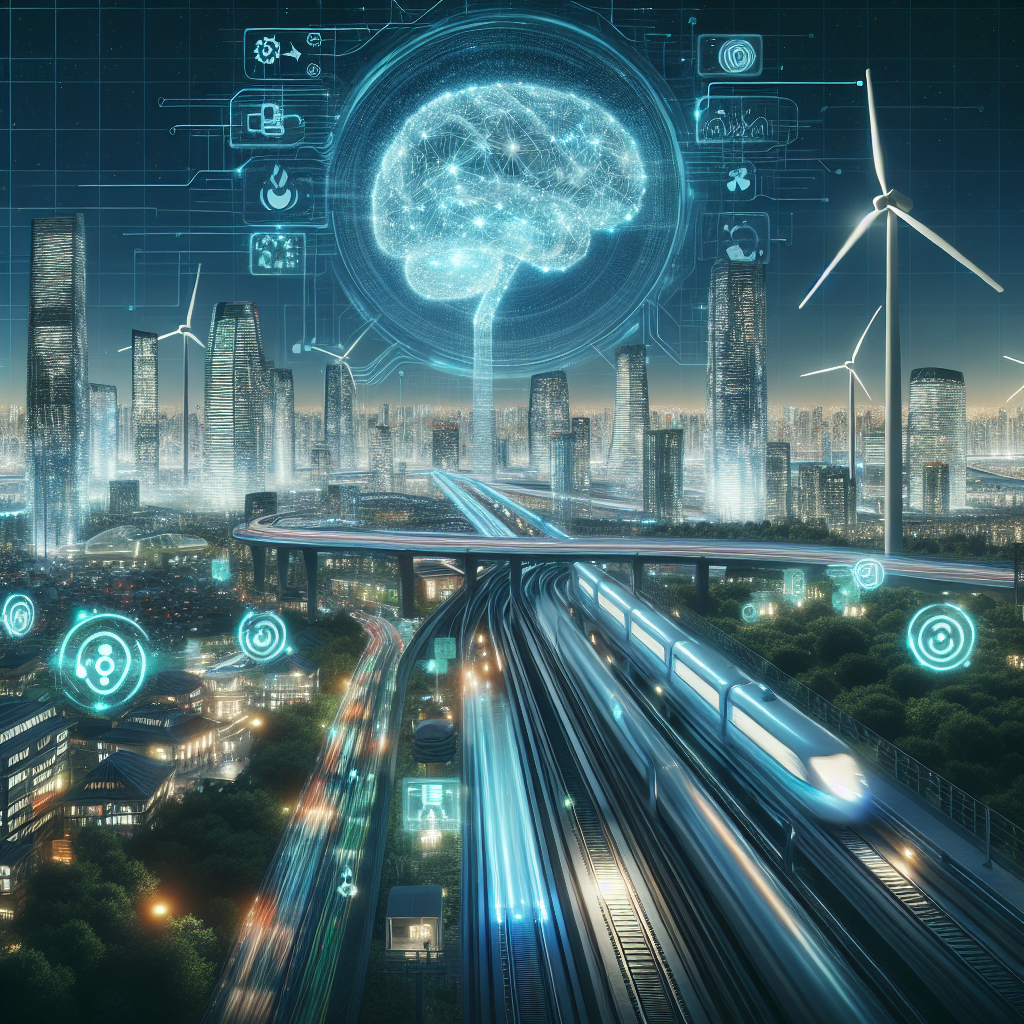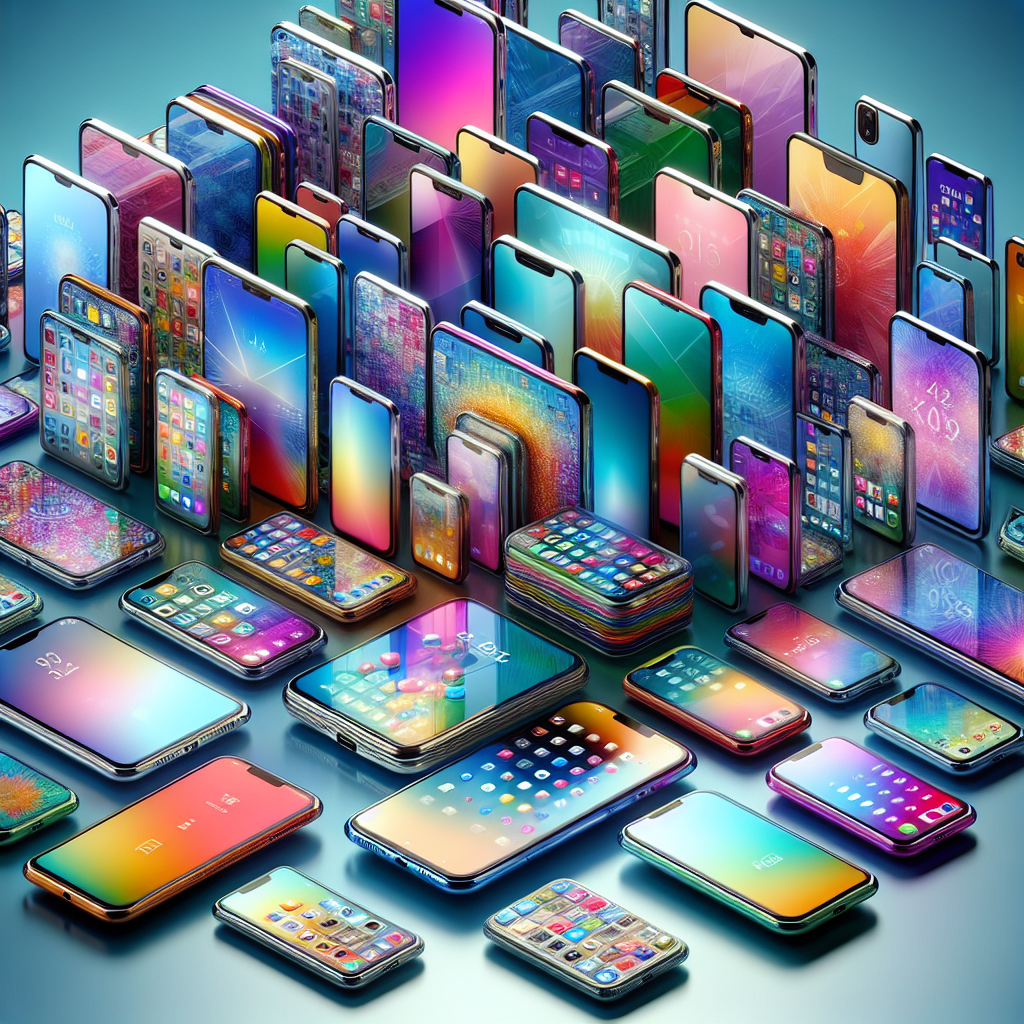-
Table of Contents
“Empowering a smarter, greener future with AI-driven energy efficiency.”
Introduction
Artificial intelligence (AI) is a rapidly advancing technology that has the potential to greatly impact various industries, including energy efficiency. AI refers to the ability of machines to perform tasks that typically require human intelligence, such as learning, problem-solving, and decision-making. In the context of energy efficiency, AI can be used to optimize energy usage, reduce waste, and improve overall efficiency in various systems and processes. This has the potential to not only save energy and reduce costs, but also contribute to a more sustainable future. In this introduction, we will explore the role of AI in energy efficiency and its potential benefits.
The Impact of AI on Energy Efficiency in Smart Homes
The rise of artificial intelligence (AI) has brought about significant changes in various industries, and the energy sector is no exception. With the increasing demand for energy and the need for sustainable solutions, AI has emerged as a powerful tool in improving energy efficiency in smart homes. In this article, we will explore the impact of AI on energy efficiency in smart homes and how it is revolutionizing the way we consume energy.
One of the main challenges in achieving energy efficiency in homes is the lack of real-time data and insights on energy consumption. Traditional methods of monitoring energy usage, such as manual meter readings, are time-consuming and often inaccurate. This is where AI comes in. By using advanced algorithms and machine learning, AI can analyze real-time data from smart meters and sensors to provide accurate insights on energy consumption patterns. This allows homeowners to make informed decisions on how to reduce their energy usage and save on their utility bills.
Moreover, AI-powered smart home systems can learn and adapt to the daily routines and preferences of homeowners. For instance, if a homeowner prefers to keep the temperature at a certain level during the day, the AI system can automatically adjust the thermostat accordingly. This not only improves comfort but also reduces energy wastage. Over time, the AI system can optimize energy usage based on the homeowner’s habits, resulting in significant energy savings.
Another way AI is improving energy efficiency in smart homes is through predictive maintenance. AI-powered systems can monitor the performance of home appliances and detect any anomalies or potential issues. This allows for timely maintenance and repairs, preventing energy wastage due to faulty appliances. Additionally, AI can also optimize the performance of appliances by adjusting their settings based on real-time data. For example, an AI-powered washing machine can adjust the water and detergent levels based on the size and type of the load, resulting in energy and water savings.
In addition to optimizing energy usage within homes, AI is also playing a crucial role in managing energy at a larger scale. With the increasing adoption of renewable energy sources, such as solar panels, AI can help in balancing the supply and demand of energy. By analyzing weather patterns and energy consumption data, AI can predict when there will be a surplus or shortage of energy and adjust the distribution accordingly. This not only ensures a stable supply of energy but also reduces the reliance on non-renewable sources.
Furthermore, AI is also being used to improve the efficiency of energy storage systems. By analyzing data on energy usage and storage, AI can optimize the charging and discharging of batteries, reducing energy wastage and extending their lifespan. This is particularly beneficial for homeowners with solar panels, as they can store excess energy during the day and use it during peak hours when electricity rates are higher.
The impact of AI on energy efficiency in smart homes is not limited to reducing energy consumption and costs. It also has a positive impact on the environment. By optimizing energy usage and reducing wastage, AI can help in reducing carbon emissions and mitigating the effects of climate change. This is crucial in achieving a sustainable future and preserving our planet for future generations.
In conclusion, AI is revolutionizing the way we consume energy in our homes. By providing real-time data and insights, optimizing energy usage, and managing energy at a larger scale, AI is improving energy efficiency and reducing our carbon footprint. As technology continues to advance, we can expect even more innovative solutions from AI to further enhance energy efficiency in smart homes.
How Machine Learning is Revolutionizing Energy Management Systems

In recent years, there has been a growing concern about the impact of human activities on the environment. One of the major contributors to environmental degradation is the excessive use of energy. As the world’s population continues to grow, the demand for energy is also increasing, leading to a strain on our natural resources. In order to address this issue, there has been a push towards finding more efficient ways of managing energy consumption. This is where artificial intelligence (AI) and machine learning come into play.
AI and machine learning have been making waves in various industries, and the energy sector is no exception. These technologies have the potential to revolutionize the way we manage and consume energy, making it more efficient and sustainable. Let’s take a closer look at how AI and machine learning are transforming energy management systems.
One of the key benefits of AI and machine learning in energy management is their ability to analyze vast amounts of data in real-time. With the help of sensors and smart meters, energy consumption data can be collected and fed into AI algorithms. These algorithms can then identify patterns and anomalies in energy usage, allowing for more accurate predictions and better decision-making. This real-time analysis enables energy managers to make adjustments and optimize energy usage, resulting in significant cost savings.
Moreover, AI and machine learning can also be used to optimize energy distribution. With the rise of renewable energy sources, such as solar and wind, the energy grid has become more complex. AI algorithms can analyze weather patterns and predict energy production from these sources, allowing for better management of energy distribution. This not only ensures a more stable and reliable energy supply but also reduces the need for backup power sources, which are often fossil fuel-based and contribute to carbon emissions.
Another area where AI and machine learning are making a significant impact is in building energy management. Buildings account for a large portion of energy consumption, and optimizing their energy usage can have a significant impact on overall energy efficiency. AI-powered building management systems can analyze data from various sources, such as occupancy, weather, and energy usage, to make real-time adjustments to heating, cooling, and lighting systems. This not only reduces energy waste but also improves the comfort and productivity of building occupants.
In addition to optimizing energy consumption, AI and machine learning can also help with energy forecasting. By analyzing historical data and weather patterns, AI algorithms can predict future energy demand, allowing energy providers to adjust their production accordingly. This can prevent overproduction and reduce the need for expensive energy storage solutions. Furthermore, AI can also help with demand response programs, where energy providers offer incentives to customers to reduce their energy usage during peak demand periods. By analyzing data from smart meters, AI algorithms can identify customers who are willing to participate in these programs and adjust their energy usage accordingly.
Apart from optimizing energy consumption and distribution, AI and machine learning can also help with predictive maintenance. Energy infrastructure, such as power plants and transmission lines, require regular maintenance to ensure their efficient operation. By analyzing data from sensors and other sources, AI algorithms can predict when maintenance is needed, reducing downtime and improving overall efficiency.
In conclusion, AI and machine learning are revolutionizing energy management systems by providing real-time analysis, optimizing energy consumption and distribution, and enabling predictive maintenance. These technologies have the potential to make our energy usage more efficient and sustainable, reducing our impact on the environment. As we continue to face the challenges of climate change and depleting natural resources, the integration of AI and machine learning in energy management will play a crucial role in creating a more sustainable future.
The Role of Artificial Intelligence in Optimizing Renewable Energy Sources
Artificial intelligence (AI) has been making waves in various industries, from healthcare to finance. But one area where AI is proving to be particularly beneficial is in optimizing renewable energy sources. As the world continues to shift towards sustainable energy, the role of AI in improving energy efficiency has become increasingly important.
One of the main challenges in renewable energy is its unpredictability. Unlike traditional energy sources, such as coal or natural gas, renewable energy sources like wind and solar are dependent on weather conditions. This makes it difficult for energy providers to accurately predict and manage the supply and demand of renewable energy.
This is where AI comes in. By using advanced algorithms and machine learning, AI can analyze vast amounts of data from weather patterns, energy consumption, and production to make accurate predictions and optimize the use of renewable energy sources.
For instance, AI can analyze weather data to predict when there will be a surge in wind or solar energy production. This information can then be used to adjust the energy supply accordingly, ensuring that there is no wastage or shortage of renewable energy.
Moreover, AI can also help in managing energy storage. As renewable energy sources are intermittent, storing excess energy is crucial for meeting the demand during low production periods. AI can analyze data from energy storage systems and make real-time decisions on when to store or release energy, optimizing the use of storage and reducing costs.
Another way AI is improving energy efficiency is through demand-side management. This involves using AI to analyze consumer behavior and adjust energy usage accordingly. For example, during peak demand periods, AI can automatically adjust the temperature in buildings or turn off non-essential appliances to reduce energy consumption.
Furthermore, AI can also play a significant role in the maintenance and monitoring of renewable energy systems. By using sensors and data analysis, AI can detect any potential issues or malfunctions in renewable energy equipment, allowing for timely repairs and preventing costly downtime.
In addition to optimizing renewable energy sources, AI is also helping in the development of new and more efficient technologies. For instance, AI is being used to design and improve solar panels, making them more efficient and cost-effective. This will not only increase the production of renewable energy but also make it more accessible to a wider population.
Moreover, AI is also being used to improve the efficiency of wind turbines. By analyzing data from wind patterns and turbine performance, AI can optimize the positioning and rotation of turbines, increasing their energy output.
The use of AI in energy efficiency is not limited to just renewable energy sources. It is also being utilized in traditional energy sources to reduce their environmental impact. For example, AI is being used in coal-fired power plants to optimize the combustion process, reducing emissions and increasing efficiency.
In conclusion, the role of AI in optimizing renewable energy sources is crucial in achieving a more sustainable future. By accurately predicting and managing energy supply and demand, improving energy storage and efficiency, and developing new technologies, AI is helping to make renewable energy more reliable and accessible. As technology continues to advance, the potential for AI to further improve energy efficiency is limitless. It is clear that AI and renewable energy are a perfect match, and their collaboration will play a significant role in shaping the future of energy.
Q&A
1) What is the role of AI in energy efficiency?
AI plays a crucial role in energy efficiency by using advanced algorithms and machine learning techniques to analyze data and optimize energy usage. This can help identify areas of energy waste and suggest ways to reduce consumption, leading to cost savings and a more sustainable energy usage.
2) How can AI help improve energy efficiency in buildings?
AI can help improve energy efficiency in buildings by monitoring and controlling various systems such as lighting, heating, and cooling. By analyzing data from sensors and adjusting settings in real-time, AI can optimize energy usage and reduce waste. Additionally, AI can also identify patterns and make predictions to further improve energy efficiency over time.
3) What are some potential challenges of implementing AI for energy efficiency?
One potential challenge is the initial cost of implementing AI technology, which may be a barrier for some organizations. Additionally, there may be concerns about data privacy and security when using AI to collect and analyze energy usage data. It is also important to ensure that AI algorithms are unbiased and do not perpetuate any existing inequalities in energy usage. Proper training and oversight are necessary to address these challenges and ensure the responsible and effective use of AI for energy efficiency.
Conclusion
In conclusion, AI has the potential to greatly improve energy efficiency in various industries and sectors. By utilizing advanced algorithms and data analysis, AI can optimize energy usage, reduce waste, and identify areas for improvement. This can lead to significant cost savings and a more sustainable future. However, it is important for AI to be implemented responsibly and ethically, with proper regulations and oversight in place. With the right approach, AI can play a crucial role in promoting energy efficiency and helping us move towards a greener and more efficient world.










